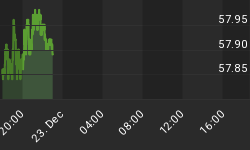
Interventions in markets by governments and central banks are routine and we take them for granted. No one questions them, but they can create dangerous distortions. Their reason for intervening is to take price determination away from markets and consumers.
The authorities and big business do not like leaving prices to free markets because prices are subjective: in other words, prices are decided by the desires of the consumer and not the cost of production. This is the central plank in the Austrian School's explanation of economic theory in free markets, and it therefore follows that what consumers actually want and at what price must in turn determine prices through the whole supply chain. Keynesians do not take this view, dismissing the influence of consumers on actual prices as a short-term effect that does not fundamentally challenge the importance of costs. They do not like uncertainty over prices, because it invalidates their economic models.
If you accept the Austrian School's argument, free markets are to be cherished, and interventions only result in less efficient use of economic resources. If you go with the Keynesians, you will believe there is room for the market to fail, arising from aberrations in consumer behaviour. They call it "animal spirits". They tell us that changes in the allocation of economic resources by the free market are not always justified, opening the door to market intervention.
There are no prizes for guessing where big business stands in this Keynesian vs Austrian debate. Given the choice between dancing to the consumer's tune and looking for government subsidy it always opts for the latter. It has a vested interest in supporting Keynesian economics.
This is why big business believes in government. Government is a source of subsidy and protective regulation. Equally, government naively believes that it must consult big business to form successful industrial and economic policies. The result of this symbiotic relationship is that government intervenes in almost everything that has a price both directly and indirectly through the manipulation of interest rates.
The effect is to downgrade the importance of consumers' wants and needs, which are most effectively expressed in free markets. The consumer, who is also a taxpayer, ends up paying the government to rig prices against him. No one, surely, can argue that this is a satisfactory way of proceeding.
But what about those animal spirits? The answer is simple: prices and products get out of line with what consumers actually want, almost always as a result of government interventions. It can be because government has subsidised or protected the wrong production, or it can be because it has provided easy money in the past and consumers have become financially over-extended. Today, both reasons are there in spades.
Understand this, and it becomes obvious that the popular solution advocated by Keynesians and big business alike, of increasing the pace of intervention, will not erase those pesky animal spirits. Instead, the cost, borne by the hapless consumer in his role as taxpayer, actually accelerates, as well as distorting markets even more.
Market intervention is what has got us here, and more of it is definitely not the cure.
















